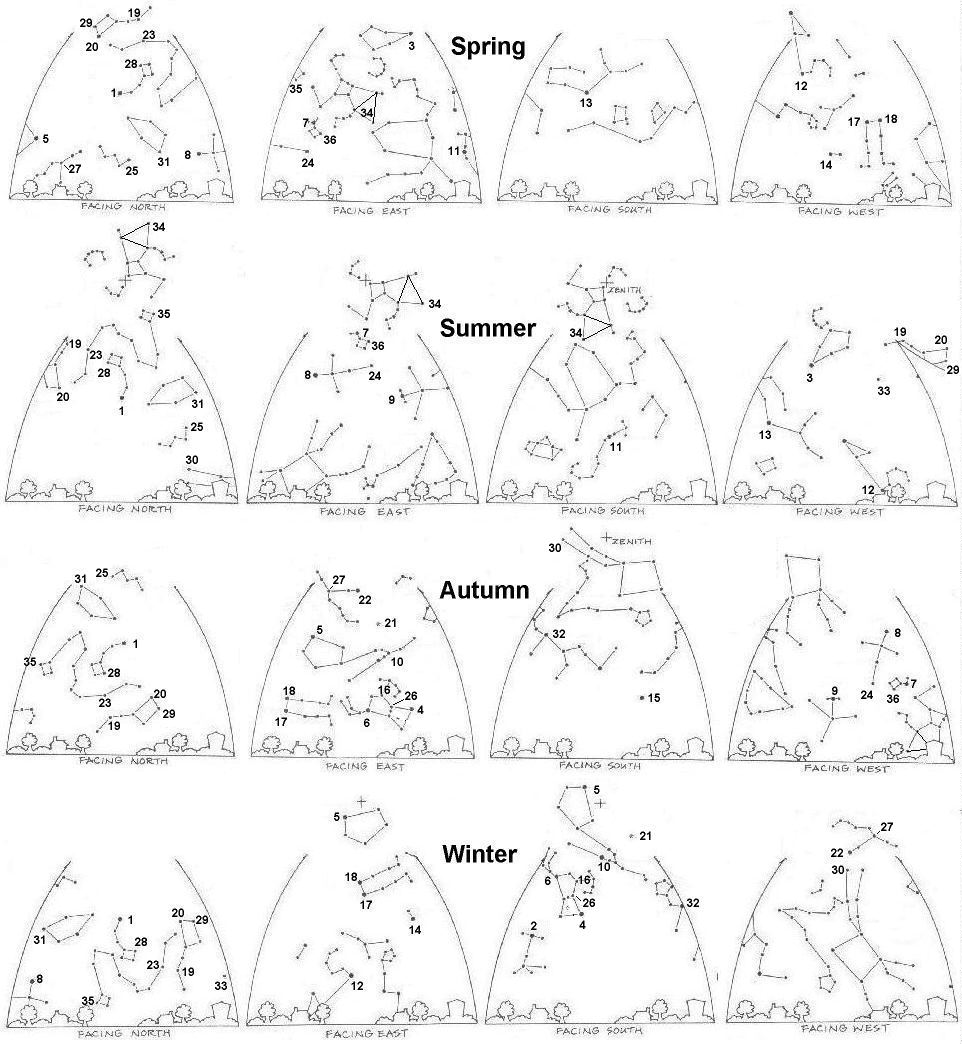
Below are 16 pictures of the sky taken from Janice VanCleave's Constellations for Every Kid. They show how the constellations actually look in each direction in spring, summer, autumn and winter. Below are some descriptions of stars. Choose which numbered star from the illustration best fits the description. All of the answers can be found in the articles "Bright Stars Worth Knowing" and "Other Stars Worth Knowing,"
